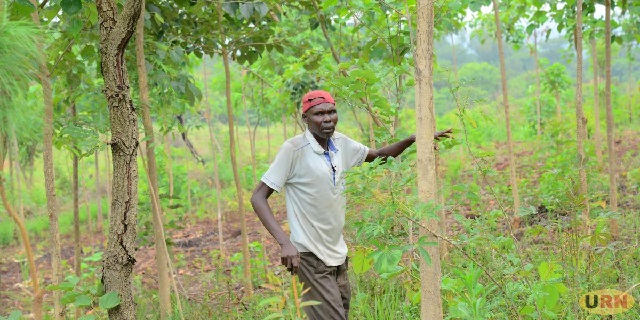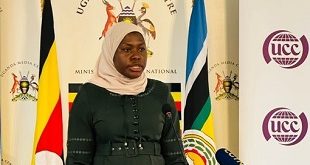
Terego, Uganda | THE INDEPENDENT | After more than a decade of absence, butterflies, birds, and small animals have once again returned in full force to Okalaka Village in the Terego district.
The reappearance of these indicator species, which help in pollination and seed dispersal among other roles, enhances biodiversity, supports ecosystem resilience, and improves the overall health of the environment.
This biodiversity restoration breakthrough has resulted from the efforts of a European Union (EU) funded programme for “Restoring and Conserving Degraded Fragile Ecosystems for Improved Community Livelihoods among Refugees and Host Communities in West Nile and Mid-Albertine Regions”.
The project aims at supporting Uganda’s refugee response systems and is funded under the EU Emergency Trust Fund for Africa (EUTF for Africa).
Ezati Robert (54), told a media evaluation tour of the project that the village lost its biodiversity landscape more than ten years ago, mainly due to cutting trees for curing tobacco and other economic activities. The owner of more than 70 acres in the area says he dedicated all of them to the restoration project, adding that this land has been family property for many years because he inherited it from his father, who also had gotten it from his grandfather.
He adds that he is practicing agroforestry on 20 of the 70 acres, and the rest are fully-fledged woodlands owned by the family.
“Before this project, this area was bare, with just scattered trees, something which worries me because I knew how it used to be since I grew up in this area and I like trees,” he further stated.
According to Ezati, his greatest joy, and that of all the other residents, is seeing the reoccurrence of birds, butterflies, and small animals like the red monkeys which had long disappeared, asserting that many of the young people are seeing these creatures for the first time. He takes it upon himself, along with other village elders, to tell the younger ones, the names and behaviors of the different birds and animals, since many are seeing them for the first time.
He adds that along with the reappearance of this biodiversity, people, especially passers-by and his family, now have a place where they can rest after a long day’s work or long-distance traveling.
“There are many people from far who come and have a rest here. I am now enjoying this place and am proud that this is my area. Right now, there is no hunger at my place because of these trees. Since they have helped to prevent soil erosion and increase fertility with to their falling leaves, now I inter-crop sorghum, cassava, maize, beans, and sesame, and they yields are better.”
The project which ends this year, is implemented by a consortium of conservation CSOs, including the Ecological Christian Organization (ECO), Uganda Biodiversity Fund (UBF), Nature Uganda, and the Wildlife Conservation Society (WCS). Harriet Tumushabe, the ECO programs manager, revealed on behalf of the consortium that a total of up to 5,411,746 euros was injected into the project.
Tumushabe says the project has restored 355 hectares of Bugoma and Mount Kei central forest reserves, conserved 1,347 hectares of woodlands with indigenous tree species, planted and protected up to 248 hectares of wetland species, as well as supported landowners in the refugee-hosting communities, just like Ezati, to establish woodlots.Up to 598 hectares have so far been established.
Since the project is about growing trees, not just planting them, Tumushabe says that labor is a pressing challenge. Other challenges include bush fires, prolonged dry spells, and termites which destroy these trees. “Much as we have the good part, we also have challenges,” she says.
“Most implementing farmers are constrained by labor because it is hard getting someone who knows the pure agronomy of the tree until the tree can sustain on its own. There is also a challenge of bush burning, which is rampant in this region, most of which is done maliciously, and some for hunting. During the dry spell, trees tend to dry up as they are scorched by the sun, and then termites also eat up the trees.”
According to her, they have intensified community sensitization and awareness, especially about environmental protection. For human-based challenges that can be managed, they are working with local governments to strengthen bylaws to curb particular challenges like roaming animals and bush burning.
A development aid report of 2023 indicates that deforestation in Uganda occur at an estimated rate of 50,147 hectares annually, with one of the contributing factors being the influx of the refugees , who clear forests for agriculture and building materials.
This breakthrough in biodiversity restoration experienced in Okalaka village, demonstrates that human intervention can combat severe environmental degradation impacts.
***
URN
 The Independent Uganda: You get the Truth we Pay the Price
The Independent Uganda: You get the Truth we Pay the Price





